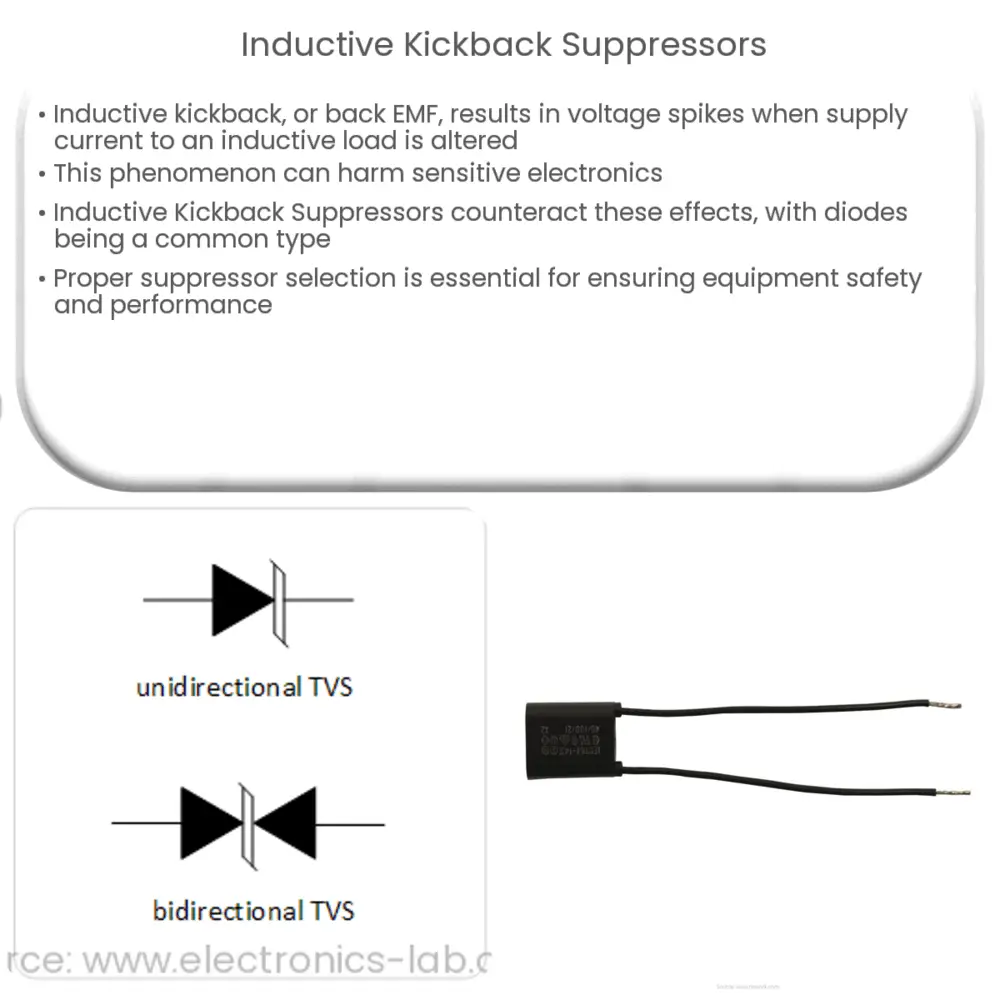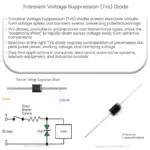Explore the impact of inductive kickbacks and how suppressors like diodes, snubber circuits, and TVS devices can mitigate damage.

Understanding Inductive Kickback Suppressors
Inductive kickback, also known as back EMF (Electromotive Force), is a fundamental principle that is widely encountered in the field of electronics and electrical engineering. It is the sudden voltage spike observed across an inductive load when its supply current is suddenly reduced or interrupted. While this phenomenon can be useful in some applications, it can also cause issues, particularly in sensitive electronic equipment. This is where Inductive Kickback Suppressors come into play. These are devices or mechanisms that help in mitigating or completely eliminating the harmful effects of inductive kickbacks.
The Problem of Inductive Kickback
When an electrical current passes through a coil or inductor, it generates a magnetic field. This magnetic field stores energy. However, when the current is suddenly cut off or reduced, the magnetic field collapses and the stored energy must go somewhere. It is converted back into an electrical charge, causing a sudden voltage spike. This is inductive kickback.
This phenomenon is particularly problematic because it can generate voltage spikes much higher than the voltage of the original power supply, causing potential damage to electrical and electronic components. This is a problem for a variety of applications, from electric motors and power tools to computer circuits and medical devices.
The Role of Inductive Kickback Suppressors
Inductive Kickback Suppressors are designed to protect electronic components from these harmful voltage spikes. They achieve this by providing a path for the current generated by the collapsing magnetic field to flow, thus dissipating the energy harmlessly.
- Diodes: One of the most commonly used Inductive Kickback Suppressors is the diode. Specifically, a type of diode known as a “flyback” or “freewheeling” diode is used. When connected in parallel with the inductive load, but in reverse-bias, it provides a path for the current during the inductive kickback, essentially short-circuiting the voltage spike.
It’s important to note that the design and implementation of an inductive kickback suppressor are heavily dependent on the specific application, load characteristics, and level of protection required. Further, different types of suppressors may be used in combination to provide enhanced protection. We will continue with other types of Inductive Kickback Suppressors in the following section.
- Snubber Circuits: Another common method for dealing with inductive kickbacks is through the use of snubber circuits. These are circuits designed to suppress a phenomenon known as “ringing” – the rapid on-off oscillation of current and voltage that can occur when the flow of current in an inductive load is suddenly interrupted. Typically, a snubber circuit will include a resistor and a capacitor in series, which is then placed across the switch. When the switch is opened, the snubber circuit provides a path for the current to dissipate, preventing or minimizing the inductive kickback.
- Transient Voltage Suppressors (TVS): These are designed to protect against overvoltage conditions such as those caused by inductive kickback. They work by clamping the voltage when it exceeds a predefined threshold, preventing voltage spikes from reaching sensitive components. There are two primary types of TVS devices – TVS diodes and Metal Oxide Varistors (MOVs).
- Zener Diodes: These can be used in a similar manner to TVS devices. They are designed to breakdown in a controlled manner when a certain reverse bias voltage is reached, thus clamping the voltage to a specific level and preventing any damaging voltage spike from reaching the components.
Choosing the right Inductive Kickback Suppressor often involves a careful analysis of the system’s requirements and limitations. Factors such as the voltage level, the rate of current change, and the nature of the load must all be considered.
Conclusion
In conclusion, inductive kickback is a significant concern in many electrical and electronic applications. Thankfully, with the use of devices such as diodes, snubber circuits, transient voltage suppressors, and Zener diodes, these potentially damaging voltage spikes can be effectively managed. Inductive Kickback Suppressors play a critical role in ensuring the safe and reliable operation of a wide range of equipment, from industrial machinery to delicate medical instruments. As technology continues to evolve, the importance of understanding and mitigating inductive kickback will only increase.



